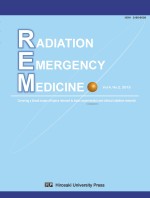Shingo Terashima1, 2, Ayumi Abe2, 3, Yukihiko Kasai2, 4, Taiga Kawamura2, 5,
Taichi Kitaya2, 6, Kazuki Kubo2, 7, Shogo Sakata2, 8, Hidenori Sugisawa2, 5,
Masataka Narita2, 9, Megumi Hattori2, 5, Daisuke Masuda2, 10, Kazuki Iwaoka11,
Masahiro Hosoda1, Tetsuo Ishikawa12 and Shinji Tokonami11∗
1Department of Radiological Life Sciences, Division of Medical Life Sciences, Hirosaki University Graduate School of Health Sciences, Japan
2Student in the Education Program for Professionals in Radiation Emergency Medicine, Hirosaki University,Japan
3Department of Nursing, Aomori Prefectural Central Hospital, Japan
4Namioka Fire Station, Aomori Fire Department, Japan
5Radiological Safety Management Department, Reprocessing Business Division, Japan Nuclear Fuel Ltd., Japan
6Health and Welfare Department, Kamitosan Public Health Center,Japan
7Environmental Radioactivity Monitoring Center, Safety Management Division, Japan Nuclear Fuel Ltd., Japan
8Department of Radiology, National Hospital Organization Hirosaki National Hospital, Japan
9Department of Radiology, Hirosaki University Hospital, Japan
10Department of Health and Welfare, Medical and Pharmaceuticals Division, Aomori Prefectural Government, ,Japan
11Department of Radiation Physics, Institute of Radiation Emergency Medicine, Hirosaki University, Japan
Radiat Emerg Med (2015) 4 (2): 29-34



